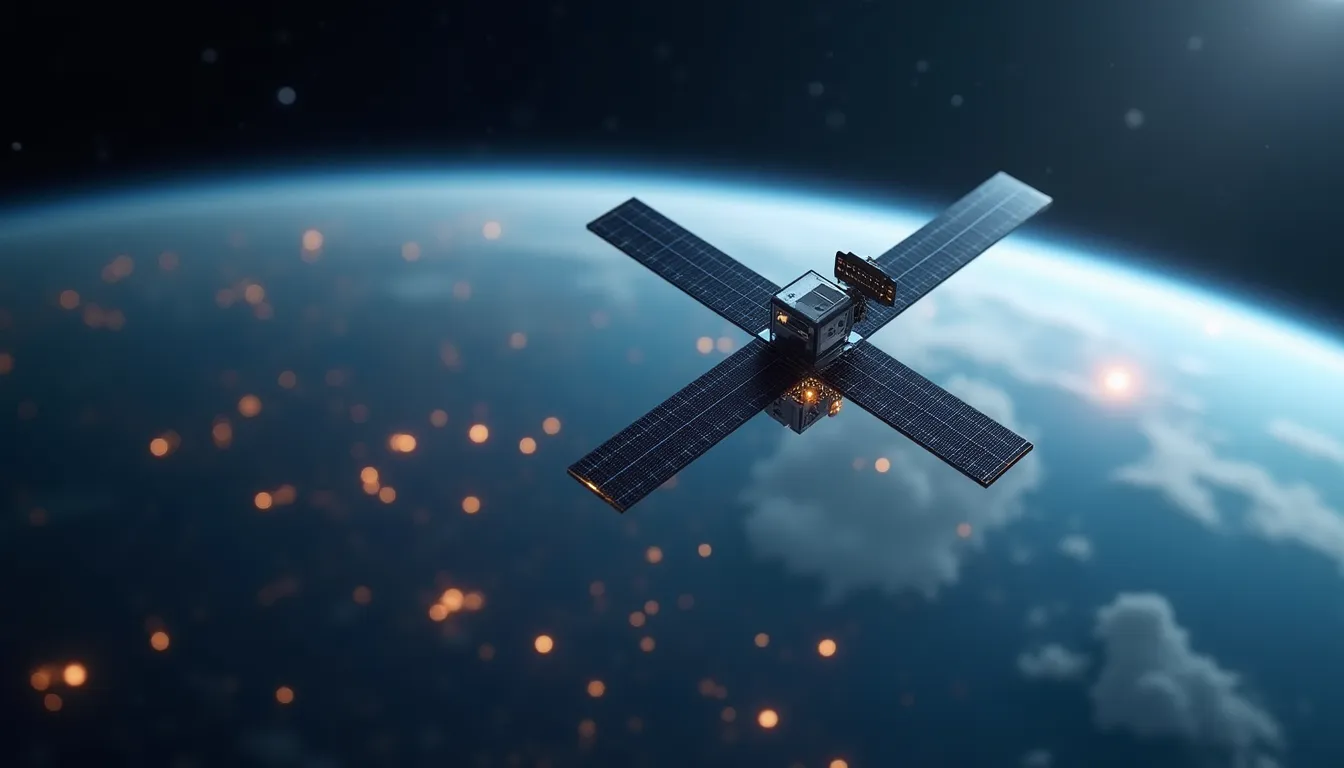Transforming Connectivity and Sustainability: Latest Innovations in Satellite Technology
The satellite industry is experiencing a transformative phase, marked by significant advancements in technology and infrastructure. In recent weeks, multiple high-profile launches and innovative projects have emerged, showcasing the potential for enhanced connectivity, environmental sustainability, and space exploration. This article delves into the latest developments in satellite technology, highlighting key launches, innovative concepts, and their implications for the aerospace and defense sectors.
Major Launches: Expanding Satellite Capabilities
On November 5, 2025, Viasat, Inc. is set to launch its highly anticipated ViaSat-3 Flight-2 satellite aboard a SpaceX Falcon Heavy rocket. This satellite is designed to more than double Viasat’s existing network capacity, significantly enhancing capabilities for next-generation connectivity platforms such as Viasat Amara and NexusWave. Furthermore, the satellite will play a crucial role in government hybrid SATCOM architecture, supporting both commercial broadband and advanced governmental communication needs.
Key Features of ViaSat-3 F2:
- Launch Date: November 5, 2025
- Capacity Increase: Expected to double existing network capacity
- Applications: Next-gen connectivity, government SATCOM
- Launch Vehicle: SpaceX Falcon Heavy
Meanwhile, the European Space Agency (ESA) successfully launched the Sentinel-1D satellite on the same day, utilizing the Ariane 6 rocket from French Guiana. As the final first-generation satellite of the Sentinel-1 mission, Sentinel-1D provides critical radar vision for the Copernicus Earth observation program, contributing valuable data for climate monitoring and disaster response efforts.
Details on Sentinel-1D Launch:
- Mission: Copernicus Earth Observation Program
- Launch Vehicle: Ariane 6
- Orbit Type: Sun-synchronous orbit (SSO)
Innovative Power Solutions in Space
In a groundbreaking initiative, Google has initiated “Project Suncatcher,” aiming to deploy AI chips, specifically Tensor Processing Units (TPUs), into low-Earth orbit powered by solar energy. This project addresses the rising energy demands of Earth-based data centers by utilizing solar power harvested in space.
Project Highlights:
- Power Source: Solar energy
- Test Satellites: Two satellites, each equipped with four TPUs, planned for launch in 2027
- Expected Economic Viability: Anticipated by 2035
This initiative aligns with a broader trend towards sustainability in satellite operations, emphasizing renewable energy sources and reducing the carbon footprint associated with data processing.
Optical Power Beaming: A New Frontier
Star Catcher has made headlines with its record-breaking optical power beaming technology, which captures and concentrates sunlight in orbit before wirelessly transmitting it to client satellites. This revolutionary approach could enable satellites to generate two to ten times more power on-demand, significantly enhancing operational capabilities.
Optical Power Beaming Applications:
- Technological Advancements: Enables scalable power grids in space
- Agreements: Six power purchase agreements valued in the tens of millions of dollars annually
Such innovations are essential for the future of satellite operations, paving the way for more efficient energy use in space missions.
Addressing Space Debris Challenges
The growing issue of space debris is a pressing concern for the aerospace industry. An international research team, including experts from Würzburg, is developing gecko-inspired technology for effective space debris cleanup. This low-cost, simple docking mechanism could be deployed on small satellites, offering a practical solution to a significant challenge in maintaining sustainable space operations.
Gecko Technology Overview:
- Design: Simple and low-cost docking mechanism
- Deployment Timeline: Prototype expected in three years, with operational readiness in about ten years
The integration of such technologies is crucial in fostering sustainable practices within the satellite industry and protecting valuable orbital environments.
Expanding the Starlink Constellation
In a related development, SpaceX successfully launched 29 Starlink smallsats to low-Earth orbit from Cape Canaveral Space Force Station on November 5, 2025. This launch is part of their ongoing efforts to expand the Starlink constellation, which aims to provide high-speed internet access globally, particularly in underserved regions.
Starlink Launch Details:
- Launch Date: November 5, 2025
- Launch Vehicle: SpaceX Falcon 9
- Orbit Type: Low-Earth orbit
The continuous growth of the Starlink constellation reflects the increasing demand for global satellite internet connectivity, an essential service in today’s digital age.
Conclusion
The latest advancements in satellite technology reveal a dynamic and rapidly evolving landscape, with innovations that promise to enhance global connectivity, improve environmental sustainability, and address critical challenges like space debris. As the industry moves forward, these developments will play a pivotal role in shaping the future of aerospace and defense, enabling new capabilities and fostering a sustainable approach to space exploration. The integration of high-performance systems, such as ZQXXSGDSS for precise laser beam positioning and tracking, and advanced sensor modules, will be instrumental in supporting these ambitious initiatives. The future of satellite technology is not just about connectivity but also about creating a sustainable and responsible framework for exploration and utilization of outer space.
References
-
SatNews (news.satnews.com) - 11/4/2025 ViaSat-3 F2 satellite confirmed for launch on November 5th, 2025 … Expected to more than double Viasat’s current network capacity, ViaSat-3 Flight-2 is designed …
-
Google wants to build solar-powered data centers — in space (www.semafor.com) - 11/4/2025 The tech giant released a paper Tuesday outlining plans to launch its AI chips into low-earth orbit, allowing them to run off solar power.
-
Record-Breaking Optical Power Beaming Proves Path to Scalable Power Grid for Space (www.morningstar.com) - 11/4/2025 Record-Breaking Optical Power Beaming Proves Path to Scalable Power Grid for Space. Provided by PR Newswire Nov 4, 2025, 6:00:00 AM.
-
Space Brief 3 Nov 2025 (keeptrack.space) - 11/4/2025
-
What’s New in Wireless - November 2025 (www.mintz.com) - 11/4/2025 The wireless industry has revolutionized the way we connect, from facilitating teleworking, distance learning, and telemedicine to allowing …
-
Cleaning up space with gecko technology - Phys.org (phys.org) - 8/14/2025 Old satellites and debris pose a danger to space travel. An international research team with participation from Würzburg is working on a …



